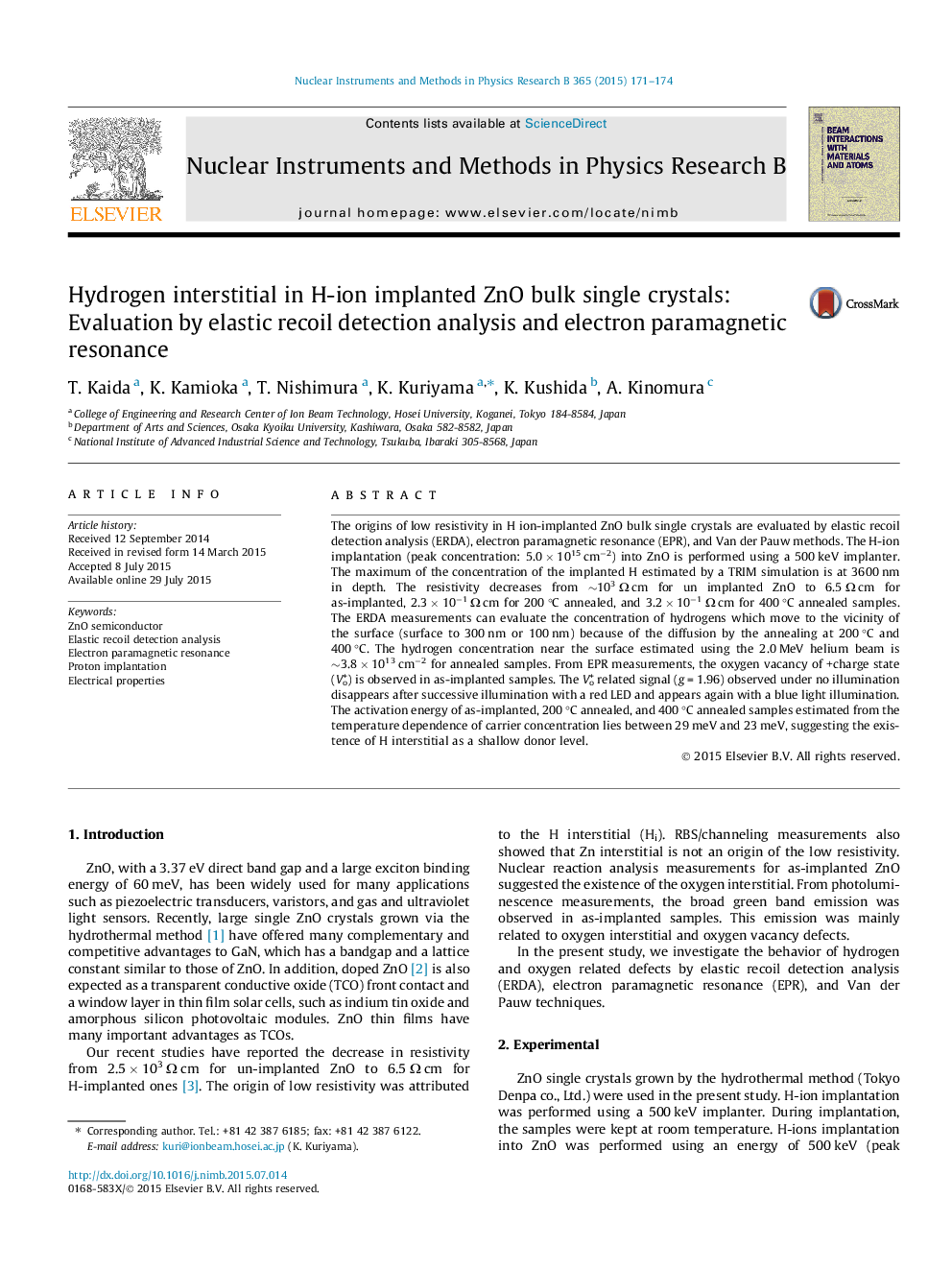| Article ID | Journal | Published Year | Pages | File Type |
|---|---|---|---|---|
| 1682407 | Nuclear Instruments and Methods in Physics Research Section B: Beam Interactions with Materials and Atoms | 2015 | 4 Pages |
Abstract
The origins of low resistivity in H ion-implanted ZnO bulk single crystals are evaluated by elastic recoil detection analysis (ERDA), electron paramagnetic resonance (EPR), and Van der Pauw methods. The H-ion implantation (peak concentration: 5.0 Ã 1015 cmâ2) into ZnO is performed using a 500 keV implanter. The maximum of the concentration of the implanted H estimated by a TRIM simulation is at 3600 nm in depth. The resistivity decreases from â¼103 Ω cm for un implanted ZnO to 6.5 Ω cm for as-implanted, 2.3 Ã 10â1 Ω cm for 200 °C annealed, and 3.2 Ã 10â1 Ω cm for 400 °C annealed samples. The ERDA measurements can evaluate the concentration of hydrogens which move to the vicinity of the surface (surface to 300 nm or 100 nm) because of the diffusion by the annealing at 200 °C and 400 °C. The hydrogen concentration near the surface estimated using the 2.0 MeV helium beam is â¼3.8 Ã 1013 cmâ2 for annealed samples. From EPR measurements, the oxygen vacancy of +charge state (Vo+) is observed in as-implanted samples. The Vo+ related signal (g = 1.96) observed under no illumination disappears after successive illumination with a red LED and appears again with a blue light illumination. The activation energy of as-implanted, 200 °C annealed, and 400 °C annealed samples estimated from the temperature dependence of carrier concentration lies between 29 meV and 23 meV, suggesting the existence of H interstitial as a shallow donor level.
Keywords
Related Topics
Physical Sciences and Engineering
Materials Science
Surfaces, Coatings and Films
Authors
T. Kaida, K. Kamioka, T. Nishimura, K. Kuriyama, K. Kushida, A. Kinomura,
